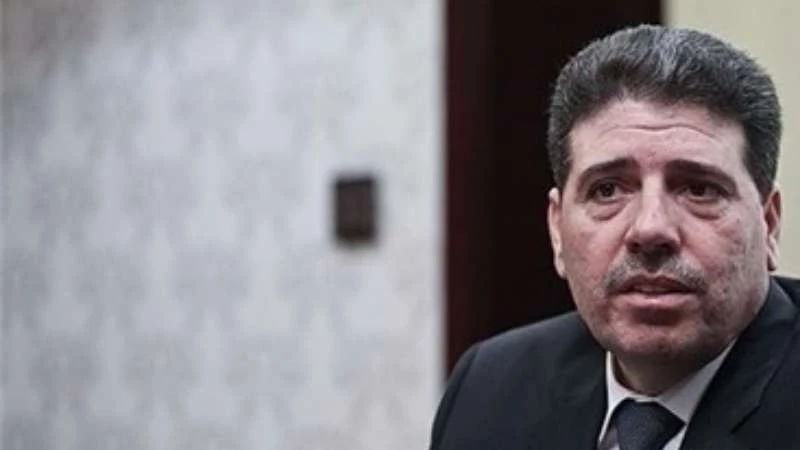In a cult, family-based and security agencies-run regime the prime minister’s political and military influence is all but non-existent. Thus, what Al-Halqi ‘uncovered’ with regards to occupying Aleppo comes according to the popular Middle Eastern maxim ‘know their secrets from their little ones’. However, why was the ‘revelation’ left to Al-Halqi rather than those who truly run Syria is a serious matter!
Be it as it may, what is happening in Aleppo – Syria’s second largest and the world’s second oldest city – is looking increasingly like a significant part of the strategic conspiracy targeting Syria and the Arab world as a whole; otherwise, why was Aleppo intentionally excluded from the Russo-American agreement on a ceasefire that would only accelerate the implementation of the political part of the said conspiracy. Noteworthy here is that the ceasefire agreed by Moscow and Washington included greater Damascus and Latakia province, which are two areas whose guaranteed ‘security’ is crucial to the Assad regime’s survival.
In international calculations Aleppo’s fate is totally different, for various considerations relative to all major players in the Syrian arena, the two most important being:
1- It is Syria’s closest metropolis to Turkey, where more than 4 million people inhabited the city and its environs. Sunni Arab, Turkmen and Kurds make up the vast majority of that region. Thus, in order to ‘create’ the much-trumpeted ‘Useful Syria’ and separate Turkey from the Sunni Arab geographic depth – as Iran and Russia desire – a high percentage of Sunni Arabs and Turkmen needs to uprooted and driven away.
2- Complementing, the above, geographically and demographically, a Kurdish strip that geographically separates Turkey from northern Syria, would insure in the future a Mediterranean seaport for the so far landlocked ‘Greater Kurdistan’ if and when Washington decides to continue Barack Obama’s policy of investing in the Kurds, hand in hand, with making Iran America’s strategic ‘partner’ in the Middle East.
These two considerations, i.e. changing Aleppo’s identity and redrawing the map of northern Syria, seem to be the reason why the regime has launched its onslaught on the city and its inhabitants aided and abetted by Russia and Iran, with an American political cover. Such a situation is fraught with huge challenges that are neither expected to weaken nor disappear, not only to the Syrian people but also to all Arabs from the Atlantic to the Arabian Gulf.
Indeed, these challenges today spread from Morocco, where figures close to the White House have re-visited the issue of the country’s Western Sahara, intentionally embarrassing, provoking and blackmailing one of America’s oldest African allies; to the Gulf Region and Yemen where Iran is interfering and fomenting sectarian tensions, while virtually ‘occupying’ most of the ‘Fertile Crescent’ (Iraq, Syria and Lebanon) with international blessings. Hence, more than ever, realistic approaches are needed towards the global political, economic and security realities.
One early landmark along this route has been the ‘2030 Vision’ announced in Saudi Arabia. It, perhaps, constitutes the most important and comprehensive futuristic plans that prepare for all possible positive and negative eventualities, underpinned on realism away from the costly ‘comfort zone’ mentality that plagued many Arab countries during the last half century.
Logically countries do not choose their natural resources or their neighbors, but can and must decide the economic, developmental, political and security priorities in the light of their perceptions of what they have and what they owe, who is the friend and who is the enemy, and which neighbor can be neutralized, befriended or warned against.
A lot has been said during the last few years in attempting to interpret the Obama administration’s policies towards the Arabs and the middle East, notably, Washington’s opening up to Iran. Then came its positions towards the Syrian Uprising, the Sunni-Shi’i friction fuelled and exploited by Iran since 1979, and ‘co-existence’ with Russia’s ambitions in the eastern Mediterranean. Among the interpretations provided the dwindling importance of the Middle Eastern oil as a result of the discoveries of alternative sources of energy, the increasing economic and security importance of East Asia led by China, and the changing mood of the American public which has grown skeptical of military adventurism abroad.
All these interpretations are true, so the question must be how to deal with them wisely? For a start, a wise approach should include; a- openness and frankness, and b- self reliance. This is exactly what took place recently when President Obama attended the GCC summit in the Saudi capital Riyadh, which has been playing pivotal roles in tackling the two hot issues of Yemen and Syria.
Obviously the positive ‘tone’ of the official statement about Obama’s meeting with the GCC leader was expected, however, both the GCC and American sides realize fully that any kind of ‘friendship; or ‘alliance’ requires ‘maintenance’ from time to time. What has emerged from Washington during the last two years, culminating in what we know today as the ‘Obama Doctrine’, was neither accidental nor ephemeral, but rather a reflection of President Obama’s deep intellectual convictions that has contributed to a comprehensive ‘value system’ transcending polite diplomatic talk.
On the other hand, it would be naïve for Washington to imagine that the Arabs, including those in the GCC and their leaders, are unable to read and comprehend the changing realities. In fact, the Arabs, especially the Gulf Arabs living just across the Gulf waters from Iran, possess very strong political memories and instincts, bettered only by decorum and patience.
Thus, until next November when a new American president is elected, there is no alternative to realism and self-reliance; and as far as ‘comfort zones’ are concerned, they now do more harm than good.



التعليقات (0)